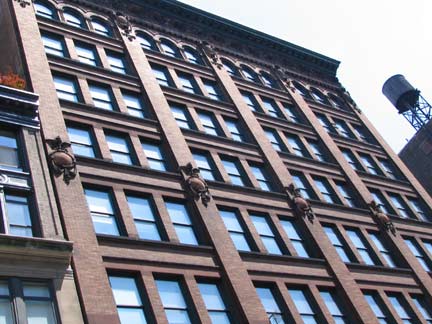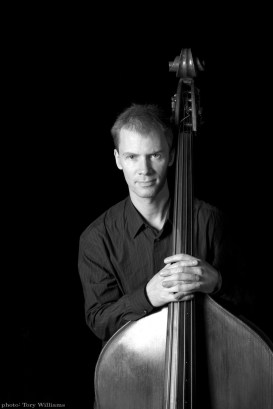If the jazz realm were a solar system, then the harmonica would be its shooting star – the streak of surprise that brings brilliance wherever it goes. In the hands of Grègoire Maret, however, the harmonica is more than just a shooting star.
At the New School’s 25th Anniversary Legacy Concert last April, Maret graced only a corner of the Tishman Auditorium stage in duet with pianist Andy Milne (with whom he also appeared on Scenarios). The pair followed an explosive program of big bands, whittling the evening’s gymnastics down to an introspective simmer. They interpreted “Body and Soul” with delicate modesty, but resonated through every molecule of air. As Maret charged forward, Milne strayed from the melody in many diverse directions. Maret too explored freer terrain, unwinding his momentum into airy experimentalism.

Maret (right) and Federico Gonzalez Peña (left) at a prior performance.
Photo source: jackylepage.com
But it was on the Jazz Standard stage that Maret blossomed into vibrant colors. Alongside pianist/keyboardist Federico Gonzalez Peña, bassist Ben Williams, and drummer Clarence Penn, he brought his new eponymous album to visceral territory. Maret’s intensity shone through his facial expression before the harmonica reached his mouth. While the band stirred awake, he silently pondered – and then speared into the cymbal-synth-bass pool like an aural diver. He conjured the spirit of a horn through his pocket-sized instrument, flaring with a sophisticated groove echoed by Peña’s piano. Penn’s drums crashed but never burned, crackling with subtly boisterous energy. Williams’ electric chords lent a funky edge to the acoustic affair.
Once guest Cassandra Wilson arrived, the scene took a sensational turn. She and Maret exuded unmistakable chemistry on “The Man I Love”, leaning toward the microphone in innate harmony. Wilson’s raspy gospel sound carried a sultry sadness on its shoulders, punctuated by gentler streams of harmonica. The vibe soon cruised under a milder light, drifting to the beat of Wilson’s sighs and Maret’s meanders. Peña, Williams, Penn, and guest guitarist Jean-Christophe Maillard subdued their melody with remarkable grace.

Maret (left) and Clarence Penn (right) unite with fiery spirit.
Photo source: Ben O’Brien Smith Photography
Several pieces later, Maret pensively slumped on a stool to deliver his goodbyes for the last time of his week-long residency. He and his band-mates retreated behind the curtain, yet a sense of melancholy lingered in the air as folks gathered their belongings. And while the Jazz Standard stretched its arms to greet the late evening, the band quietly slipped back onstage. Their encore was laced in a medley of intricate, bittersweet textures. But one solitary harmonica wail was enough to say it all: Maret spills his heart into every melody and note, transforming his instrument into a paintbrush of the soul.




